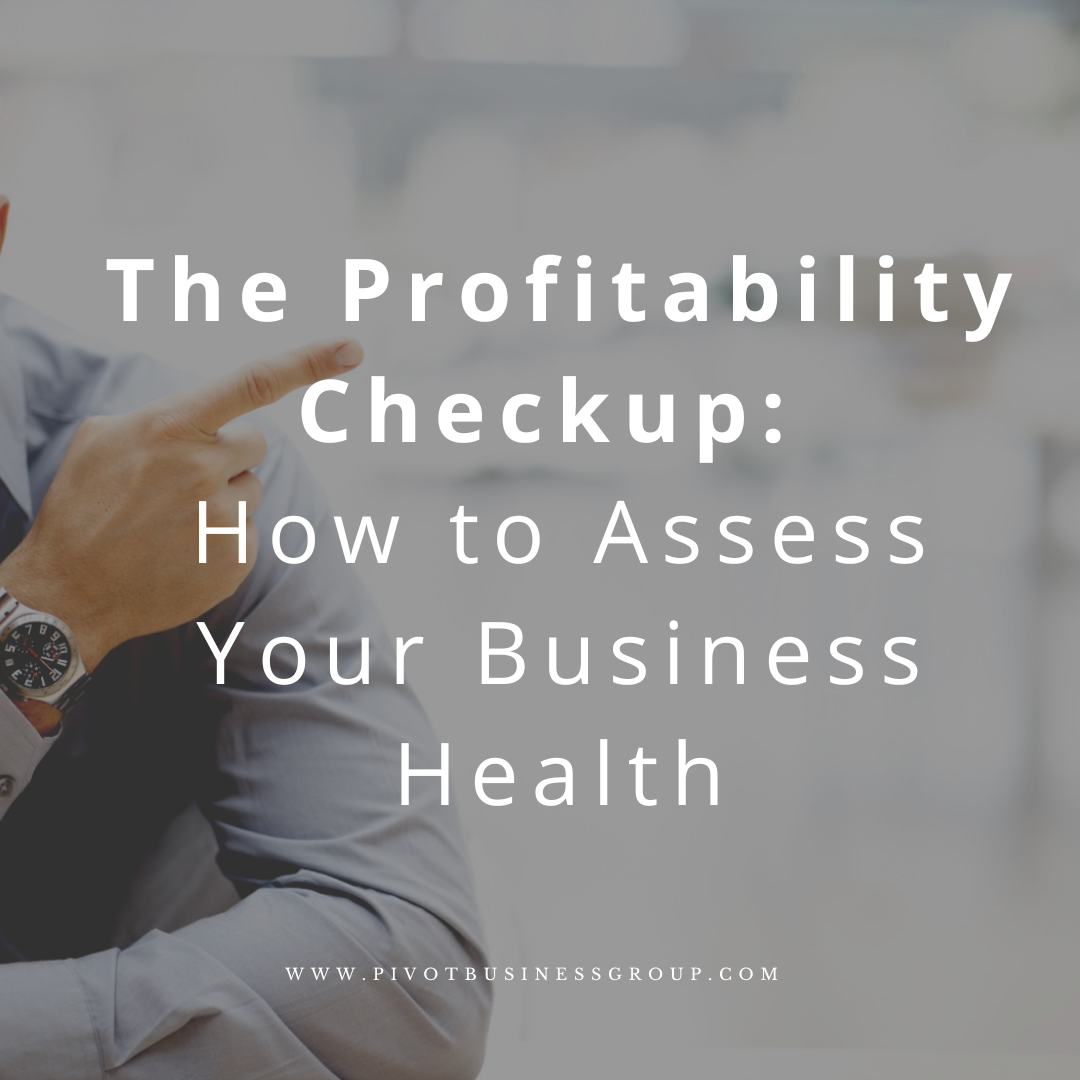The Profitability Checkup: How to Assess Your Business Health
📊 Is your business as profitable as it should be? Use this simple framework to evaluate your numbers and make strategic improvements.
As a small business owner, you likely have big dreams and a strong vision for growth. But are you keeping an eye on the one thing that matters most—profitability? Too often, business owners are focused on sales growth or day-to-day operations without taking a hard look at whether their business is actually generating sustainable profits.
A profitability checkup is essential for any business—whether you’re doing well or feeling some pressure. It’s not just about making money, but about ensuring that your revenue is enough to cover all expenses and fuel long-term growth. With the right tools, you can assess your business health and identify areas that need improvement. ✅
1. Review Your Profit Margins
The first step in any profitability checkup is understanding your profit margin. Your profit margin shows how much of your revenue is actually profit after all expenses are accounted for. The formula is simple:
Profit Margin (%) = (Net Income / Revenue) x 100
Knowing this number will give you a clear picture of how well your business is turning revenue into profit. If your margin is low, it might be time to look at:
🔹 Reducing costs – Are there areas where you’re overspending?
🔹 Raising prices – Can you increase your rates without losing customers?
🔹 Improving efficiency – Is there a way to streamline processes and save time or money?
2. Analyze Your Revenue Streams
Next, evaluate where your revenue is coming from. Do you have diversified income or are you relying too heavily on one source? Businesses with multiple streams of income are often more resilient because they’re not dependent on one customer or product.
Consider:
🔹 Recurring Revenue – Subscription-based services or repeat customers help create predictable cash flow.
🔹 One-Time Sales – Are you relying on big, one-off sales that can leave cash flow gaps?
🔹 New Products or Services – Can you introduce complementary offerings that increase the lifetime value of each customer?
Having a balanced approach to revenue sources can help you mitigate risks and ensure steady profitability.
3. Manage Your Costs Effectively
It’s not just about how much money you bring in—it’s also about how much you’re spending. Business owners often focus so much on generating revenue that they overlook hidden or unnecessary expenses.
Start by reviewing your fixed and variable costs:
🔹 Fixed Costs – These are costs that remain the same each month, like rent, salaries, and insurance.
🔹 Variable Costs – These change depending on business activity, such as materials, shipping, or commissions.
Look for opportunities to:
✅ Cut wasteful spending – Are there subscriptions or services you no longer use?
✅ Negotiate with vendors – Can you get better rates or discounts for bulk purchases?
✅ Outsource tasks – Is there an area of your business that could be more cost-effective if outsourced?
4. Evaluate Cash Flow
Even if your business is profitable on paper, cash flow issues can still cause financial stress. Profit and cash flow are closely related, but they are not the same. Ensure that you have enough cash on hand to cover day-to-day expenses and unexpected costs.
🔹 Review your accounts receivable – Are clients paying on time, or are invoices piling up?
🔹 Look at your accounts payable – Are you paying bills too late or taking advantage of early payment discounts?
🔹 Create a cash flow forecast – Predict your monthly cash inflows and outflows to avoid surprises.
5. Set Goals for Profitability
Once you’ve analyzed the numbers, it’s time to set clear, actionable goals to improve profitability. Focus on:
🔹 Increasing your profit margin through cost-saving strategies or price adjustments.
🔹 Growing recurring revenue to stabilize cash flow.
🔹 Reducing unnecessary expenses and improving operational efficiency.
Keep the Pulse on Your Business Health
Just like a regular checkup for your body, performing a profitability checkup for your business helps you stay on track, identify potential issues early, and make informed decisions that can drive sustainable growth.
Summary: Regular profitability assessments are essential for business health. By reviewing profit margins, revenue streams, costs, and cash flow, you can make strategic changes that lead to a more profitable and sustainable business. 📈

